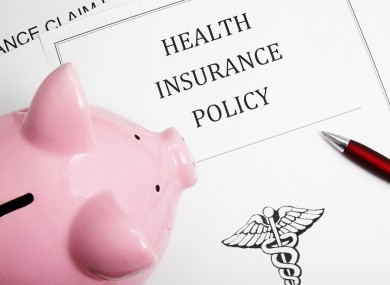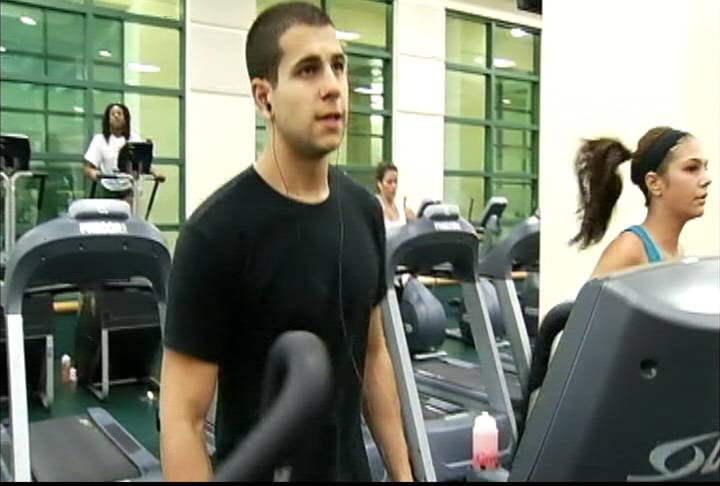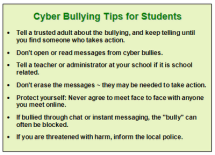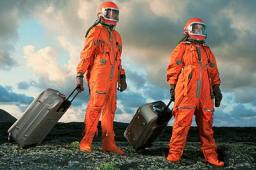One in three Irish families plan to give up private healthcare insurance


ONE THIRD OF YOUNG IRISH FAMILIES PLAN TO DROP PRIVATE HEALTH INSURANCE THIS YEAR, ACCORDING TO NEW RESEARCH COMMISSIONED BY LAYA HEALTHCARE.
The study also showed that one in six claim they can no longer afford it, while almost half say they are unhappy about the upcoming increase in the government levy charge which will downgrade their health cover to more basic benefits from 31 March.
Almost 64,000 people dropped their cover in 2012, indicating that increasing prices are having serious affects.
Almost one in nine people are worried about falling ill and having to rely on the public health system, while 74 per cent plan to fast track medical procedures while they have private health insurance in place. For those planning on cancelling or downgrading their cover, 86 per cent said they will delay going to their GP to keep costs down.
Dónal Clancy, Managing Director of Laya Healthcare, who will give the keynote address at the National Healthcare Conference tomorrow said ways need to be found to incentivise people to take up private health cover because the current system is unfair:
The current system is unfair in that the majority of people on more basic plans are cross-subsidising those on the premium top-tier plans with all the frills. This is unjust and is fuelling a record market decline. Applying risk equalisation to a core, standard set of benefits would help stabilise the market and address the issue of fairness.
The majority (76 per cent) of health professionals do not think that Ireland’s health system was designed to protect the people that need it most. In line with this, 100 per cent of health professionals said that Ireland’s health system is in need of urgent reform.
The Taoiseach Enda Kenny and other Ministers made representations to James Reilly over the CF drug
HSE GROUP HAD FOUND COST OF KALYDECO WAS TOO HIGH TO BE RECOMMENDED AS TREATMENT
Taoiseach Enda Kenny was one of a number of senior Government figures to write on behalf of Cystic Fibrosis patients to the Minister for Health James Reilly concerning the sanction of the drug, Kalydeco.
Documents released under the Freedom of Information Act show in addition to the Taoiseach, Mr Reilly also received representations from Minister for Education Ruairí Quinn and Minister for Children and Youth Affairs Frances Fitzgerald.
Tánaiste Eamon Gilmore’s office also made a representation to Mr Reilly’s office on behalf of a CF patient.
The documentation shows Minister for Arts, Heritage and the Gaeltacht, Jimmy Deenihan made a representation to Minister Reilly on behalf of the drug maker,Vertex Pharmaceutical.
 In his letter to Mr Reilly, Mr Kenny wrote ‘Dear James, I am enclosing correspondence I received from (name redacted) regarding authorisation for the use in Ireland of the drug, Kalydeco as a treatment for cystic fibrosis”.
In his letter to Mr Reilly, Mr Kenny wrote ‘Dear James, I am enclosing correspondence I received from (name redacted) regarding authorisation for the use in Ireland of the drug, Kalydeco as a treatment for cystic fibrosis”.
In the letter dated January 15th 2013 on Office of the Taoiseach notepaper, Mr Kenny wrote: “I would be grateful if you could arrange to have this matter examined and if you could let me know the position.”
On February 1st Mr Reilly gave his approval for Kalydeco for the 120 or so CF patients with the G551D mutation from March 1st last.
In January the HSE National Centre for Pharmacoeconomics (NCPE)had recommended against the approval of the drug at over €234,000 per patient per annum and a budget of €28 million per annum. The Minister for Health approved the drug after negotiations between HSE and Vertex Pharmaceuticals over the price of the drug.
In a letter to Minister Reilly on January 31st, director general designate of the HSE, Tony O’Brien said the cost of Kalydeco over 10 years will be €220 million
The letter by Mr Kenny to Dr Reilly was prompted by a CF patient writing to Mr Kenny to say: “If I got Kalydeco, I would be a much healthier and happier person and not have to endure all the medication and worries and struggles that go with CF.
Vertex country manager for the UK and Ireland, Simon Lem told Minister Deenihan in a letter dated December 12th last that Vertex has concerns over the cost effectiveness threshold used by the NCPE.
He said: “A number of innovative medicines have recently not been recommended for use by the NCPE as a result and Vertex is working to ensure that CF patients are not similarly disadvantaged.”
Richard Bruton assures Irish savers that there will be no bank tax

Deposit account holders need not fear a Cyprus-style tax on their savings, according to Enterprise Minister Richard Bruton.
Mr Bruton said the detail of the EU’s bailout of Cyprus would be designed to avoid contagion elsewhere in the euro-region. Initially Cypriot resident and non-residents were to be levied 6.75% on bank savings of less than €100,000, and 9.9% above that benchmark. With rates in flux, these levies could move to 3.5% and 12.5% respectively.
“Junior bondholders are clearly in the firing line in this case,” Mr Bruton told RTÉ Radio One yesterday. “The deal has yet to go to the Cypriot parliament. There is an indication of flexibility in relation to the deal, but the detail has yet to be finalised.
“There are different models in different countries. In Ireland, the original bank guarantee gave a blanket protection. We had €64bn in re-capitalisation of the banks, which has a knock-on for citizens, as we know only too well. We had the debate over what burden should bondholders carry.
“We now have full protection for everyone up to €100,000. Where the cost [for Cypus] has to be shared out, a lot of thought has gone into balancing that to make sure there is a fairer [burden] sharing than occurred in the Irish case.”
Mr Bruton said Ireland will not change its corporate tax rate, even though Cyprus is expected to increase its rate as part of the bailout. He said Ireland’s export-led recovery required that a low corporate tax rate be maintained.
Fianna Fáil’s Michael McGrath said the burning of depositors in Cyprus sets a dangerous precedent across the eurozone and makes a mockery of plans for an EU-wide banking union.
“The imposition of a so called ‘tax’ on deposits sends a clear signal ordinary depositors are now in the firing line. Despite the comments from senior EU officials that Cyprus is a unique case, this move will undermine the confidence of investors in the eurozone and cause alarm to savers across Europe.
“Spanish savers will now ask whether they will have to take losses if billions more euros have to pumped into Spanish banks. Irish depositors will legitimately ask how safe their money is if it transpires that Irish banks need more money to absorb losses on mortgages and business loans.”
EU economics and monetary affairs commissioner Olli Rehn welcomed the bailout deal, and sought to ease concerns about any contagion. German finance minister Wolfgang Schäuble said the plan would help bring financial stability.
How healthy hearts can lower the risk of cancer


HEARTS AND TUMORS MAY ACTUALLY SHARE MORE IN COMMON THAN WE THINK.
Following heart-healthy recommendations can also protect you from cancer, according to the latest study from the American Heart Association (AHA). Eating a healthy diet, exercising and maintaining your weight have long been ways to fend off heart disease, but researchers at Northwestern University Feinberg School of Medicine in Chicago report in the journal Circulation that following the AHA’s Life’s Simple 7 steps to reduce heart disease can also cut cancer risk.
 The Life’s Simple 7 include:
The Life’s Simple 7 include:
- Being physically active
- Keeping a healthy weight
- Eating a healthy diet
- Maintaining healthy cholesterol levels
- Keeping blood pressure down
- Regulating blood sugar levels
- Not smoking
 ( Berries Linked to Lower Heart Disease Among Women)
( Berries Linked to Lower Heart Disease Among Women)
Researchers studied the health records of 13,253 white and African-American men and women who were involved in the Atherosclerosis Risk in Communities Study, which tracked the seven risk factors and the participants’ health outcomes since 1987. At the beginning of the study, the volunteers were examined and interviewed about which healthy behaviors they followed.
Twenty years later, the researchers reviewed hospital records and cancer registries and discovered that 2,880 of the participants were diagnosed with cancer of the lung, colon or rectum, prostate and breast. Those who were diagnosed, however, tended to follow fewer of the Life’s Simple 7 behaviors than those who did not develop cancer. People who followed six of the seven health metrics had a 51% lower cancer risk than the participants who did not meet any of the steps. The relationship held even after the scientists accounted for the effect of smoking on cancer risk; when smoking was taken out of the equation, participants who followed five to six of the health steps had a 25% lower cancer risk.
 (For Better Heart Health Exercise Harder, Not Longer)
(For Better Heart Health Exercise Harder, Not Longer)
“This adds to the strong body of research suggesting that it is never late to change, and that if you make changes like quitting smoking and improving your diet, you can reduce your risk for both cardiovascular disease and cancer,” said lead study author Laura J. Rasmussen-Torvik, an assistant professor at the Northwestern University Feinberg School of Medicine in a statement.
That’s welcome, and helpful news amid the current sea of conflicting and confusing data about preventing chronic disease. In this case, the message is actually quite simple — certain healthy habits, such as eating foods low in fat, sugar and calories, and exercising regularly, can lower your risk of two of the major killers of American adults. “There are many health messages presented in the popular press and frequent (and sometimes contradictory) reports of novel risk factors for disease,” Rasmussen-Torvik and her colleagues write. “These messages sometimes confuse consumers, leaving them unsure on the most important steps to take for disease prevention. We hope that emphasizing a unified approach from multiple chronic disease advocacy groups, promoting some common steps for disease prevention, will be particularly effective in helping the public to prevent chronic disease.”
Irish School leaders call for collective action on cyber-bullying


Almost a third of parents say they rarely check on their childrens’ Internet activity
Over half of parents check their child’s online activity at least once a week, according to a survey of 293 parents of 10- to 18-year-olds conducted by Amárach Research on behalf of the National Association of Principals and Deputy Principals (NAPD), the professional body for second level school leaders.
Almost three in 10 parents (29%) reported checking their child’s Internet activity either very infrequently or not at all, according to the survey, which aimed to gauge public attitudes to bullying, particularly cyberbullying.
The survey found that just less than one in five (18%) of parents believed their child had been cyberbullied. Just over seven in 10 (73%) did not believe their child had been cyberbullied and the rest did not know.
When parents were asked whether they believed their child has cyberbullied, 12% said they had while 78% said they had not. The remaining 10%, did not know. The survey found that mothers were more likely than fathers to check what websites their children were visiting. Almost three-fifths of mothers (59%) said they checked their child’s Internet activity at least once a week, compared with 45% of fathers.
When Amárach Research asked 1,001 adults whose responsibility it was to deal with cyberbullying, most believed it was shared between schools, parents and victims. However, almost one-fifth (19%) believed other groups such as tthe gardaí, the bullies themselves, victims’ friends, support groups and sports clubs also had a role to play.
“IIn commissioning this research, our objective was to gauge public attitudes to cyberbullying, identify the trends defining the problem, and then help schools, parents and broader society to tackle it,” saif Clive Byrne, NAPD director. “While responsibility for dealing with cyberbullying is shared across society, the victim must remain our central focus. We must empower our children to use the new tools of the information age while at the same time educate them about the terrible harm they can cause if these tools are abused. NAPD will continue to work with principals to devise and implement school-wide policy programmes that monitor cyber risk and take steps to eradicate any risks to the wellbeing of children.”
Mars, the moon and other off-Earth spots for space tourists
MOON TRIPS, HUMAN SETTLEMENTS FOR MARS BEING PLANNED


NASA has awarded a contact to Bigelow Aerospace to provide NASA with inflatable modules that can be attached to the International Space Station to serve as homes for astronauts. The module can also function as an independent space station
In a recent interview with CBC Radio, entrepreneur Bas Lansdorp spoke of his space project, Mars One, and the search underway for people willing to travel to Mars (with the caveat it would be a one-way ticket).
While trips carrying humans to certain off-Earth destinations may still be years away, space tourism continues to grow as an industry, and a handful of well-heeled private citizens have already taken the journey to the final frontier, or at least as far as the low-orbit International Space Station.
SO HOW CLOSE ARE WE TO SENDING PEOPLE TO OTHER PLANETS OR MOONS?
MARS
Lansdorp’s Mars One has set its sights on the red planet, with a goal to establish a human settlement there by 2023. Lansdorp believes the technology to get humans to Mars exists, but not to bring them back, meaning these astronauts would effectively be emigrants, travelling there, living there and also dying on Mars.
He said his organization has already received 8,000 emails from people interested in the space trek.
It would cost about $6 billion US to send the first four astronauts, he said, and $4 billion for every crew thereafter. Investors, company sponsorships, donations and future broadcasting rights would help fund the project.
Once these adventurers land on Mars, following a seven-to-eight month journey, they would settle in inflatable components, which contain bedrooms, working areas, a living room and a “plant production unit,” where they would grow greenery.
“They will also be able to shower as normal, prepare fresh food (that they themselves grew and harvested) in the kitchen, wear regular clothes and, in essence, lead typical day-to-day lives,” the Mars One website says.
But Lansdorp isn’t the only player in the going-to-Mars business. Multimillionaire Dennis Tito, the first space tourist to privately fund his trip to the International Space Station in 2001, recently announced the creation of the Inspiration Mars Foundation.
Its plan is to send a man and a woman on a privately funded, 501-day trip to Mars and back in 2018. They would come within 160 kilometres of the surface of Mars, then head back to Earth.
THE MOON
During the Republican primaries last year, former House speaker Newt Gingrich received some ribbing when he pledged to establish a moon base by 2020 if he became president. Although Gingrich was criticized for being overly optimistic, there are projects in the works to take earthlings to the moon.
The Golden Spike Company said it plans to offer routine exploration expeditions to the surface of the moon. It estimates the cost for a two-person fully automated mission at $1.4 billion, or about $750 million per person, by 2020 . It says it would use existing rockets and raise money by marketing its service to nations, individuals or corporations.
Space Adventures, the space tourism company that offers private citizens trips to the International Space Station, also said it has designed a “circumlunar mission” to the moon.
 This image shows an artist’s rendition of Space Adventures’ proposed Lunar Propulsion and Habitation Module docking with Soyuz.
This image shows an artist’s rendition of Space Adventures’ proposed Lunar Propulsion and Habitation Module docking with Soyuz.
“Our plan is to be able to circumnavigate the moon. It’s not to land on it just yet,” Tom Shelley, president of Space Adventures, told CBC News. “We’re going to take it step by step. So, first of all, we’ll just get mankind close to it, get to about 100 kilometres.”
The three-and-half-day journey to the moon would be made with the Russian Soyuz spacecraft, which is currently used to take space tourists to the ISS. Organizors would add an extra habitation module to make it a little more comfortable to live in.
Shelley said there are two seats on the mission for private citizens, at the cool price of $150 million per person. The third seat is taken by the Russian cosmonaut.
Shelley said the company has one client already under contract and expects to have another commitment in another year or so. They hope the mission could be good to go by 2017.


No comments:
Post a Comment